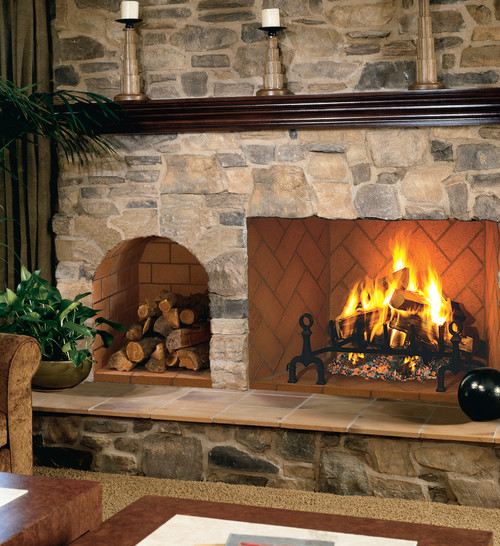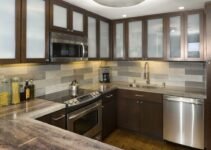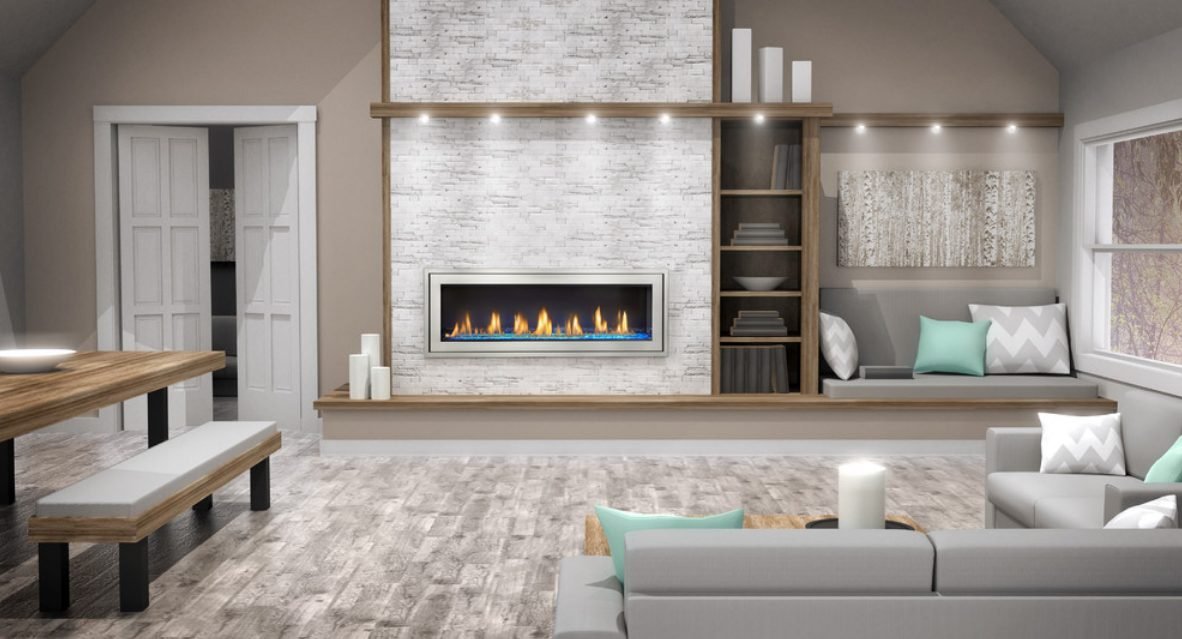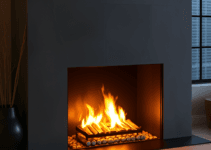I don’t think we can have a picture of the perfect American family room without a fireplace. And anyway, a fireplace adds value to any home. But in spite of all the glowing aesthetics, there are some practical considerations. Unfortunately a fireplace in the house is not perfect. A malfunctioning fireplace simply causes frustration and actually affects the quality of your home’s environment.

Photo by Builders Materials – Browse basement ideas
When you’re dealing with an element as capricious and potentially dangerous as fire, knowledge really is power, so please read on to learn how to make your fireplace both safer and more enjoyable.
The indoor fireplace is a technology that dates from the Middle Ages, when people in medieval castles and homes used them for warmth. However, traditional fireplaces today are desired more for their aesthetics than to be used as effective heating appliances.
Fireplaces come in two general types:
- Masonry fireplaces built entirely of bricks, blocks or stone and mortar
- Factory built fireplaces consisting of a lightweight metal firebox and a metal chimney.
Outdoor Fireplace Considerations | How To Build A House (howtobuildahouseblog.com)
Make Your Fireplace Work
1. Check the fireplace damper to confirm it is open. The damper is a device that controls the amount of air flowing through the flue. The flue is the passage or duct for smoke in a chimney.
Feel inside the chimney or pop your head inside to look at the damper with a flashlight. It is a good idea to hire a professional to clean the damper area if water damage is present or if soot has accumulated behind the damper.
2. Ask the professional to clean the area of the flue. This creates extra space for appropriate venting. Be sure that your chimney and fireplace is properly cleaned and maintained. Checking for cracks once per year will ensure that you don’t have fire escaping the chimney and lighting the frame of your home.
Eliminating creosote buildup (oily soot) from the inside of the chimney will keep you from suffering a chimney fire.
3. Light a match near the opening of the flue and see if the draft is coming down or going up. If it is still coming down, you must find a way of reversing the draft and getting it to go up.
Under no circumstances can you light the fire with the draft coming down.
One method is to use a starter block (StarterLogg is one brand — break off a quarter of a stick) or a commercial wax log (such as Duraflame or Pine Mountain). These will light and stay lit, creating some warmth inside the firebox and helping the draft start upwards, and they burn with little smoke:
- Close the damper (to stop the air from coming down).
- Put the block on the back of the fireplace shovel, light it and place it up inside the fireplace near the flue opening. What you are trying to do is to heat the upper part of the fireplace.
- When you have heated it slowly open the damper and with luck and skill you will find that the heat and fire from your little block will force the air up the chimney.
- When the draft has fully reversed then you can light your fire.
4. Remove any bird nests from the chimney, which commonly becomes a home for birds and other animals.
Place a cap atop your chimney to keep debris such as small sticks and foliage as well as animals from reentering it, thus improving your fireplace’s efficiency.
5. To function properly, the chimney should be at least 10 or 12 feet in overall height. Where it projects above the roof, the chimney should be at least 3 feet tall, and at least 2 feet higher than anything within 10 feet of it-including other buildings, trees, etc.
If your fireplace smokes because your chimney is too short, the problem is usually worse when the wind blows.
6. Use only dry wood for your fireplace, as wood actually only burns once all of the moisture in the wood is absent. Select only seasoned wood, which means it is no more than 20 percent wet.
If your wood is not dry and well seasoned it makes more smoke than heat and there simply may not be enough heat for the chimney to work properly.
Use oak, maple, cherry, hickory split into pieces about 4 inches on each side.
7. Don’t burn plastics or paper with color printing, such as comics or magazine pages or gift wrap, because they may give off toxins. Never, ever use flammable liquids in your fireplace.
8. Do not leave a fire burning in your fireplace unattended. All sorts of unexpected things can happen.


